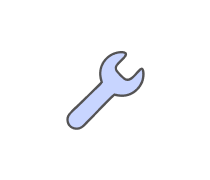Symbols entered in the 781A SYM block may
Which is an example of foreign object damage (FOD)?
You can use cellophane tape to mend a torn TO page as long as
The responsibility for FOD prevention on the flight line rests...
What color tag is used on a new part?
Which statement is true concerning being a maintenance technician?
When you are working around electrical circuits, you should
Since people normally display no outward symptoms of small overdoses...
What should be used on open hydraulic lines?
What type of maintenance is performed as a flightline technician?
Methods and procedures TO's begin with
The most common contaminant found in aircraft hydraulic systems...
If a page is found missing from a TO, it
How would you repair pages that have been ripped out of a TO binder?
Personnel who fail to maintain maintenance integrity will be held
What are the two major categories of maintenance?
If a significant fuel leak developed while a pilot was taxiing an...
Where is a defective part sent in the repair cycle?
What are the three types of maintenance?
Aircraft hydraulic systems are very dangerous because they operate at...
When two dissimilar metals are coupled together in the presence of an...
What are the objectives of the Aircraft Structural Integrity Program...
Who is responsible for flight maintenance production?
A warning note is required to be entered on an AFTO Form 781A. to do...
Within an AMU, the Specialist Section includes
When the CORRECTED BY block on an AFTO Form 781A is signed, the...
The personnel in the originating point interact with the originator as...
Which is not an example of information found in maintenance manuals?
The three main categories of TCTO are
What must be performed prior to using the TTU-205 test set?
Abbreviated TOs are primarily used
Which statement is not true concerning hazardous noise?
Who initiates the Report of Survey?
Changes in the text of a TO are indicated by
Who authorizes a cannibalization?
Which TO series will have the inspection requirements for any F-15...
How can you tell if a supplement is filed in a TO?
What is the purpose of the AN/APM-424 test set?
What type of maintenance is normal upkeep and preservation of...
Responsibility for initiating follow-up action on a TO change...
Which action will never be done after removing a LRU?
Interim safety supplements are transmitted
When is technician qualified to sign off a red dash or diagonal?
The primary cause of electrostatic discharge (ESD) damage to avionic...
The "2" in group 3 of TO number 1U-2S-2-10 designates that...
An inventory of each TO page is also known as a
Which type of corrosion causes the metal surface to become rough and...
How are isochronal inspections determined?
Identify stock items found in the work center
Quality assurance works directly for the
What type of inspection is more thorough than a preflight?
Which situation is not a reason to submit a deficiency report (DR)?
Which best describes some of the jobs and responsibilities of the...
Which maintenance squadron flight repairs, maintains, modifies,...
Work cards are normally grouped by type of
What must be accomplished to keep the breakaway torque wrench set at a...
The status today symbol on the AFTO Form 781H represents the
Bench stock should carry enough of an item to last for
If the urgency of conditions doesn't allow for time, what type of...
What is the most common type of torque wrench used in the Air Force?
How many push buttons are on the AN/APM-424 test set?
After taking a suspected radio frequency over exposure victim to the...
Supplements are issued to augment or change data in the basic TO
What operating system is used with the simplified key loader (SKL)?
You should wear both ear plugs and ear muffs at noise levels above
How many basic types of inspections does our career field use?
Prior to performing any maintenance on an aircraft you must first...
Group two of an aircraft TO number identifies the
Which is accountability?
What is the DD form 1574?
Who is responsible for aerospace equipment maintenance required to...
Which is not a responsibility of the originator?
Hydraulic fluid is not
What are the primary aids to effective inspection scheduling?
What would the priority recommendation be if a TCTO were deficient?
How would you know a TO number is in the utility aircraft TO category?
Who determines whether additional inspections are required on a 30-day...
The fourth group of a TO number contains one or two parts identifying...
How many basic types of inspections does the Air Force use?
What region of noise levels is considered relatively safe?
In the Air Force how many levels of maintenance do we have?
Gas cylinder valves have fusible safety plugs that are designed to...
High humidity affects the buildup of a static charge on insulator...
Which is the intention of the SERENE BYTE exercises?
What would the priority recommendation be if a TO deficiency would...
What factor(s) determine the amount of laser energy absorbed by the...
How many indicating torque wrenches are there?
On the AN/ALM-288 countermeasures dispensing set, test set (CDSTS),...
When a TO change takes place, the changed (new) TO page
How often should a torque wrench be calibrated?
What are the examples of shop stock?
Which level of maintenance completes Category 2 TCTO?
The two types of recommended TO changes are
Who coordinates the effort to establish a forward supply point?
The number and type of the next inspection due on an aircraft is...
The noise level at which your eardrums could easily rupture is
When the TO number has only three parts, group three identifies the
On the joint service electronic combat systems test set (JSECST),...
The extent of skin damage that can be inflicted by a laser is...
Routine TO supplements are filed
















